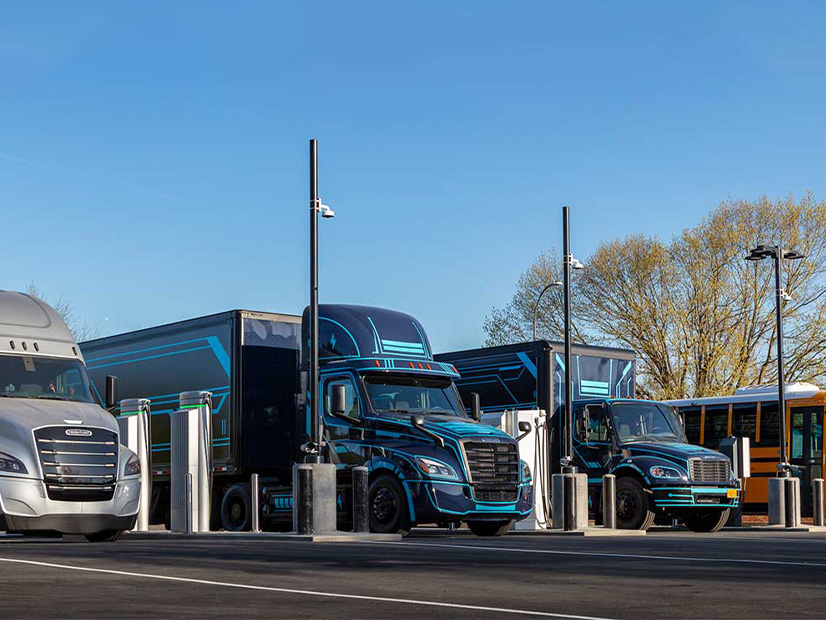
When it comes to zero-emission truck incentive programs, Oregon stakeholders want to see a program similar to California’s popular HVIP, and they recommend keeping incentive programs consistent along the West Coast.
Those were some of the findings of a new report from the Oregon Department of Environmental Quality and the state Department of Transportation. The report, “Incentives to Support the Transition to Zero Emissions for Medium- and Heavy-Duty Sectors in Oregon,” was prepared in response to direction from the state legislature.
The report found that current incentives are not enough to promote a rapid transition to zero-emission trucks.
“State and federal grant programs are underfunded, too narrow in scope or both,” ODOT’s Climate Office said in summarizing the report’s key takeaways. “New programs must be flexible and established quickly.”
A variety of incentives are needed for zero-emission vehicles alone, infrastructure, or a combination of vehicles and infrastructure, the report said. In addition, federal, state and utility incentive programs should work together so that the incentives can be “stacked.”
And equity should be a priority, the report said. Incentive programs should earmark funding for fleets that serve communities disproportionately impacted by emissions, and small businesses should be offered assistance in navigating the programs.
Stakeholders Weigh In
As part of the process for developing the report, DEQ and ODOT held listening sessions with fleet owners, nonprofits and other interested parties.
Commenters spoke highly of California’s Hybrid and Zero-Emission Truck and Bus Voucher Incentive Project (HVIP), which offers point-of-purchase incentives that vary with the type and model of truck.
“[Stakeholders] supported adoption of a similar, if not identical, program in Oregon,” the report said.
Commenters also called for consistency among zero-emission truck incentive programs on the West Coast, speculating that better incentives in other states would discourage ZEV purchases in Oregon. On the other hand, Oregon might not be able to sustain incentive programs that are too generous.
Stakeholders suggested calculating ZEV incentives as a percentage of vehicle purchase price or basing them on the cost difference with diesel trucks. Another suggestion was to give incentive recipients more time to buy a ZEV or install infrastructure, due to ongoing supply chain issues.
Another California strategy that was discussed is the state’s requirement for utilities to implement “make ready” systems to streamline infrastructure installation.
“A similar approach in Oregon may cut down installation time — which is currently anywhere from 18 to 24 months — once supply chain issues are resolved,” the report said.
ZEV Truck Collaboration
In 2021, Oregon joined a coalition of 19 jurisdictions — 17 states, the District of Columbia and Quebec — that signed a memorandum of understanding to accelerate the transition to zero-emission medium- and heavy-duty trucks. The group set a goal of making at least 30% of new medium- and heavy-duty truck sales zero-emission by 2030, with 100% ZEV sales by 2050.
In July, the group released an action plan with more than 65 strategies and recommendations aimed at encouraging zero-emission truck adoption. The Oregon agencies incorporated recommendations regarding incentive programs into the new report.
For example, one recommendation is for states to reduce or waive sales tax and registration fees for zero-emission trucks until they cost the same as diesel vehicles.
An analysis by the California Air Resources Board found that model year 2024 ZEV trucks will cost an expected $14,000 to $87,000 more than conventional vehicles, according to the Oregon report.
That cost difference is expected to disappear by 2030.
“While 2030 is not far out, the amount of emission and GHG from diesel vehicles will be costly to the environment and to the health of Oregonians,” the Oregon report concluded. “Incentivizing adoption of ZEV now is imperative to support climate initiative and the livability of Oregon.”



